Rimonabant
- CAS NO.:168273-06-1
- Empirical Formula: C22H21Cl3N4O
- Molecular Weight: 463.79
- MDL number: MFCD04034714
- EINECS: 200-223-5
- SAFETY DATA SHEET (SDS)
- Update Date: 2024-04-26 14:09:12
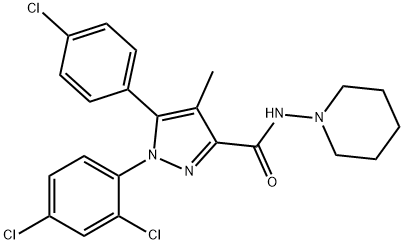
What is Rimonabant?
Absorption
Undetermined
Toxicity
Almost twice as many people discontinued rimonabant compared with placebo because of adverse events (13.8% vs. 7.2%). These consistently involved psychiatric disorders (8.5% vs. 3.2%), including depression and anxiety. Other common side effects included insomnia, nausea, vomiting, diarrhoea and fatigue.
Description
Rimonabant is a first-in-class drug launched as an oral treatment for obesity, and its mechanism of action involves the selective antagonism of cannabinoid type 1 (CB1) receptor. It is specifically indicated as an adjunct to diet and exercise for the treatment of obese patients (body mass index [BMI]≥30 kg/m2), or overweight patients (BMI>27 kg/m2) with associated risk factors such as type 2 diabetes or dyslipidemia. Additionally, rimonabant is currently under development as a treatment for nicotine dependence. The CB1 and CB2 receptors, along with their endogenous ligands, constitute the endocannabinoid system. The CB1 receptor is expressed in the brain, adipose tissue, and several peripheral organs; the CB2 receptor is predominantly expressed in immune cells. Activation of the CB1 receptor in the CNS is associated with appetite stimulation and the modulation of brain reward mechanism, whereas activation in the periphery favors metabolic processes that lead to hepatic lipogenesis and impaired glucose homeostasis. Rimonabant acts by selectively blocking the action of central and peripheral CB1 receptors, thereby reducing food intake and improving lipid and glucose metabolism.
The Uses of Rimonabant
Rimonabant is a selective antagonist of CB1 with IC50 of 13.6 nM and EC50 of 17.3 nM in hCB1 transfected HEK 293 membrane
What are the applications of Application
Rimonabant is an immunomodulatory CB1 receptor inverse agonist
Background
Rimonabant is an anorectic anti-obesity drug produced and marketed by Sanofi-Aventis. It is an inverse agonist for the cannabinoid receptor CB1. Its main avenue of effect is reduction in appetite. Rimonabant is the first selective CB1 receptor blocker to be approved for use anywhere in the world. Rimonabant is approved in 38 countries including the E.U., Mexico, and Brazil. It was rejected for approval for use in the United States. This decision was made after a U.S. advisory panel recommended the medicine not be approved because it may increase suicidal thinking and depression.
Indications
For use in conjunction with diet and exercise for patients with a body mass index greater than 30 kg/m2, or patients wih a BMI greater than 27 kg/m2 with associated risk factors, such as type 2 diabetes or dyslipidaemia.
Pharmacokinetics
In the RIO-North America trial, 3040 patients were randomized to receive either placebo or one of two doses of rimonabant (5 mg or 20 mg per day). Patients taking 20 mg rimonabant had significant weigh loss, decrease in waist circumference, improved insulin sensitivity, and increases in HDL cholesterol, compared to patients on placebo.
Metabolism
Hepatic, CYP3A4 involved.
Properties of Rimonabant
| Melting point: | 154.7 °C |
| Density | 1.41±0.1 g/cm3(Predicted) |
| storage temp. | RT |
| solubility | Soluble in DMSO (up to 20 mg/ml) or in Ethanol (up to 20 mg/ml). |
| form | solid |
| color | White |
Safety information for Rimonabant
Computed Descriptors for Rimonabant
Abamectin manufacturer
Alfa Omega Pharma
New Products
3-N-BOC-(S)-AMINO BUTYRONITRILE 4-Piperidinopiperidine 2-Methyl-4-nitrobenzoic acid 2-(4-bromophenyl)-2-methylpropanoic acid 4-Acetyl-2-methylbenzoicacid Acetyl-meldrum's acid Ethyl-4-Pyrazole carboxylate 2,6 Di acetylpyridine 2,6-Pyridinedimethanol 5,7-Dichloro-3H-Imidazo[4,5-B]Pyridine 5-Bromo-2-Methoxy-4-Methyl-3-Nitropyridine 2-Fluoro-5-Iodopyridine 2-Fluoro-5-Methylpyridine 2-Chloro-3-Bromo-5-Amiopyridine METHYL-4-(BUTYRYLAMINO)3-METHYL-5-NITROBENZOATE TRANS-CYCLOBUTANE-1,2- DICARBOXYLIC ACID 5-Nitro indazole R-(-)-5-(2-AMINO-PROPYL)-2-METHOXY-BENZENESULFONAMIDE 1,3-cyclohexanedione 4-Aminophenaethylalchol (S)-(+)-4-BENZYL-2-OXAZOLIDINONE 3-NITRO-5-ACETYL IMINODIBENZYL 1-HYDROXY-4-METHYL6-(2,4,4-TRI METHYL PHENYL)-2-PYRIDONE MONO ETHANOL AMINE(PIROCTONE OLAMINE) 4-FLUORO PHENYL MAGNESIUM BROMIDE 1.0 M IN THFRelated products of tetrahydrofuran
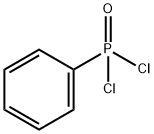

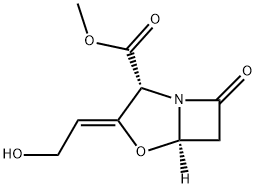

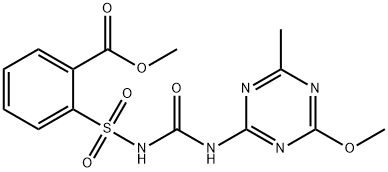
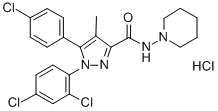
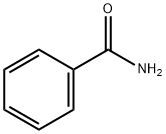

You may like
-
 168273-06-1 Rimonabant 98%View Details
168273-06-1 Rimonabant 98%View Details
168273-06-1 -
 2,3 Dichloro-4-Hydroxy Aniline 39183-17-0 99%View Details
2,3 Dichloro-4-Hydroxy Aniline 39183-17-0 99%View Details
39183-17-0 -
 17673-56-2 99%View Details
17673-56-2 99%View Details
17673-56-2 -
 13463-67-7 Titanium Dioxide 99%View Details
13463-67-7 Titanium Dioxide 99%View Details
13463-67-7 -
 143-07-7 99%View Details
143-07-7 99%View Details
143-07-7 -
 Ethanolamine 141-43-5 99%View Details
Ethanolamine 141-43-5 99%View Details
141-43-5 -
 20776-67-4 99%View Details
20776-67-4 99%View Details
20776-67-4 -
 acid blue 113, acid navy blue , wool navy blue 0View Details
acid blue 113, acid navy blue , wool navy blue 0View Details
3351-05-1